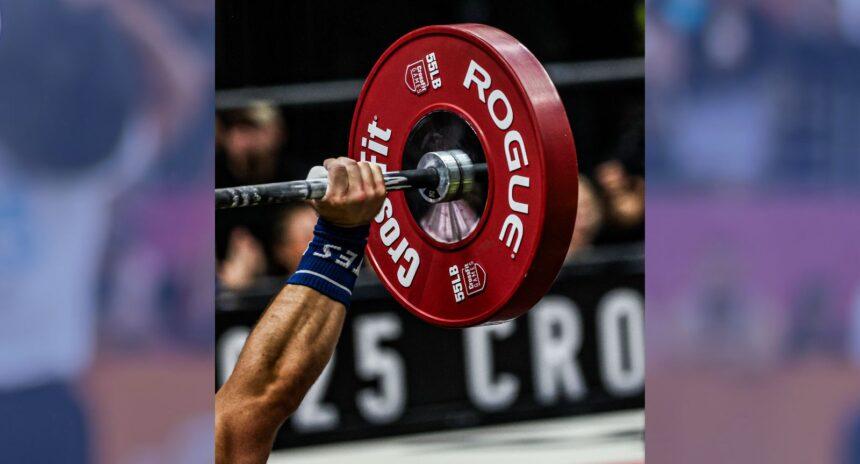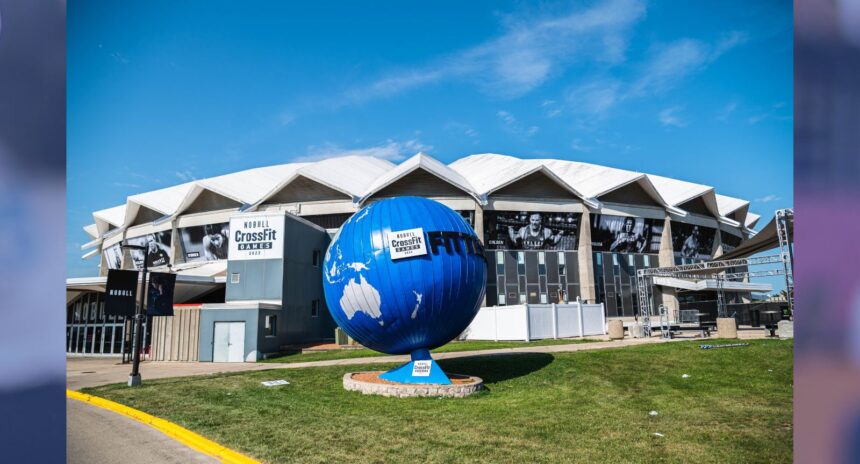CrossFit Tightens Adaptive Division Requirements For 2023 Season, Putting Some Athletes Classification in Question

Athletes across the globe probably saw the 2023 NOBULL CrossFit Open registration and didn’t have to think twice about signing up and throwing their hat into the ring of making it to the 2023 NOBULL Crossfit Games. But for some it isn’t that easy.
Individuals who are vying for a spot in the adaptive division of the Open and furthermore for a chance to compete at the Games have to go through a series of paperwork and assessments to ensure they qualify for one of the eight adaptive divisions. A step many of these athletes didn’t have to take last year.
Which Alec Zirkenbach, Accessibility and Adaptive Sport Specialist at CrossFit, says is only to ensure they have the most accurate field of athletes in each division and they were changes “largely driven” by feedback from the community and guidance from the Divisional Athlete Council that has specific adaptive athlete representation.
- “Athletes wanted to have people vetted up front, they didn’t want people that were potentially not eligible or potentially didn’t review the adaptive athlete policy or interpret correctly that may not be eligible because maybe their impairment didn’t meet the qualifications or something to that effect.”
- “And so we made those changes this year, so that now athletes have to get, essentially, they’re vetted before they start the competition ideally.”
Zirkenbach explains that as of December 1 athletes can submit their eligibility package irregardless of if they’ve registered for the Open or not and there is no fee to do this. Or if an individual doesn’t do it ahead of time they are able to register for the Open, select their division, and have all the way up until the last day of Open competition to submit their scores and submit their eligibility package.
For the 2023 season all athletes who want to compete in the adaptive division must complete a number of documents, video submissions, and medical exams depending on the impairment, according to CrossFit.
Eligibility Form: All athletes will need to submit an Adaptive Competition Eligibility form along with video or photo evidence of their impairment.
Adaptive CrossFit Movement Assessment: This fitness test “demonstrates the athlete’s abilities in relation to common CrossFit movements performed during competition, and assists in demonstrating limitations from an eligible impairment. There are two versions of the assessment: one for standing athletes and one for seated athletes. The assessment can be completed at any time, at any gym with the required equipment. The only requirement for submission is a video recording link of the assessment. No scores are submitted,” according to CrossFit.
Medical Testing: Most impairments will require medical testing. Each impairment will have a unique medical test and additional requirements are as follows:
1. Print their specific medical testing form.
2. Have a medical professional perform the testing and fill out the form.
3. Video record the testing and provide a recording link.
4. Upload a scanned copy of the form.
“I would say the gate to entry to be vetted has theoretically moved up to weed out anybody that would potentially be ineligible based on their criteria for the divisions,” adds Zirkenbach.
The origin of the adaptive division in the Games dates back a ways, but the more concerted effort to include a division in CrossFit began in 2017 when CrossFit first launched the adaptive training course as a specialty course. Conversations surrounding adaptive divisions being added to the Games were ongoing, but didn’t come together until 2021—the first year adaptive divisions were added.
For the 2021 and 2022 season any athlete that competed in the adaptive division had to complete a self-assessment and didn’t have to be vetted unless they made a qualifying spot for the Games. At which point they would then be vetted by CrossFit, which entails a different procedure for all 10 eligible impairments.
Aside from the changes in requirements for the adaptive division as a whole, there are also specific qualifications for adaptive divisions, such as the neuromuscular division which has been reclassified as the Multi Extremity division.
Amsterdam based Kevin Maijer, who competed in the Games in 2022 under the neuromuscular division, says he’s concerned about the new requirements. Maijer has multiple sclerosis, MS for short, which is a progressive disease affecting the brain and spinal cord. The immune system effectively attacks the central nervous system disrupting the signals to and from the brain. Maijer lost his eyesight to the disease and required a guide to run with him during the Games last season— he placed fifth in his division.
However, based on Maijer’s understanding of the new requirements he is concerned about his ability to qualify in the Multi Extremity division due to the fact that his ailments aren’t always apparent and can come on at different times. For instance, Maijer explains he recently lost his ability to walk due to an MS flare up, which is when a new or the worsening of an old symptom occurs. After a short time in the hospital he was back on his feet, however he explains the pain continues and it has really impacted his training.
- “Since being diagnosed with MS in 2020 it hasn’t stopped. I’m getting medication, but the point of the medication that I’m getting for MS is to, you know, stop it as much as possible, but it’s not doing that. So currently my doctors are looking at that as well, like, ‘what can we do about this?’ Because it’s a really hard situation that I’m in and it’s getting worse. So right now it’s really hard for me.”
- Maijer says his 2023 season is unclear right now: “It mainly depends on how I’m feeling. And it also depends on what CrossFit has in store for me in terms of which adaptive division they’re going to put me in because the rules have changed so much.”
Due to some misconceptions, Zirkenbach wants to make it very clear CrossFit does not exclude any specific diagnosis from eligibility and says a “potential misconception” is that a medical diagnosis is the same as an eligible impairment for classification in competition.
- “The two are often intertwined, as impairments are typically manifestations of a medical diagnosis. Many adaptive sport classification systems, including CrossFit, are impairment-based, not diagnosis-based. There are only 10 eligible impairments–same as in previous years. A diagnosis alone is insufficient for eligibility,” said Zirkenbach.
- “For example, an athlete with MS or cerebral palsy (CP) as a diagnosis may be eligible via one of the 10 eligible impairments like hypertonia. But, the diagnosis of MS or CP alone is not an eligible impairment. A spinal cord injury diagnosis is not an eligible impairment, but an athlete may be eligible via impaired muscle power.”
Separately, Maijer said competing at the Games last year was beneficial to him mentally and gave him a huge boost. But because of the requirements leading into the 2023 season Maijer is less intrigued to try again.
When Maijer went to fill out the forms to register he said he told his wife, “I just don’t have the power to go through this. On the side of everything that’s going on, on the side of trying to train, taking care of my kids, I don’t feel the power of finding three separate medical professionals that can help me with these tests or separate workouts to video for CrossFit just to prove that I can’t do something.”
Zirkenbach acknowledges the amount of work these athletes will have to go through, but wants to emphasize it should only have to happen one time.
“We at CrossFit are going to record and store people’s classification so that after this year, it’s important for the community to understand, you may have to do more work this year to be vetted for eligibility, but most athletes who do that will not have to do that again,” said Zirkenbach. “And so their eligibility, their classification, if it’s going to remain somewhat steady and permanent, then they won’t have to do that again.”
Andrea Unwin, an adaptive athlete who also has MS, says these requirement changes were necessary for the long term success of the adaptive division.
- “If you want to see change, we’re all going to have to buy into this and see where it gets us, for the sake of the future of adaptive CrossFit and to enable adaptive athletes to compete on a more level playing field (with the creation of sports classes)” said Unwin, who adds candidly, she doesn’t know which division she will end up in herself. “And I don’t think CrossFit knows how many people will end up in which category until we provide them with the data to work this out.”
- On the new requirements, Unwin says, “I think it’s absolutely necessary. I don’t understand why people are taking issue with it. If you want to participate, have an impairment as a result of your condition and you believe you’re eligible, you should be willing to be tested. The classifications are widely based on para sports testing (but with a bit more leniency as to testing locations etc), and so are a reliable, tried and tested metric.
Unwin, who made it to semifinals last year in the neuromuscular division, said the requirement to compete was always that you needed to have an eligible impairment rather than an eligible condition.
“So technically, if you were acting in good faith, you shouldn’t have ever competed in the adaptive division if you didn’t believe you had an eligible impairment, but this was self-verified” said Unwin.
The distinction between an eligible condition and an eligible impairment is “quite clear cut,” she adds.
Athletes last year “absolutely had the conditions they claimed to have, but whether they fit the impairment criteria, wasn’t verified until just prior to the Games (and at the Games) beyond the self-certification at the beginning of the Open, or where further evidence was submitted it couldn’t be independently verified, and so a lot of people complained about the process and eligibility and so what CrossFit has done is, in my view, addressed that and brought in unified testing across the board.”


